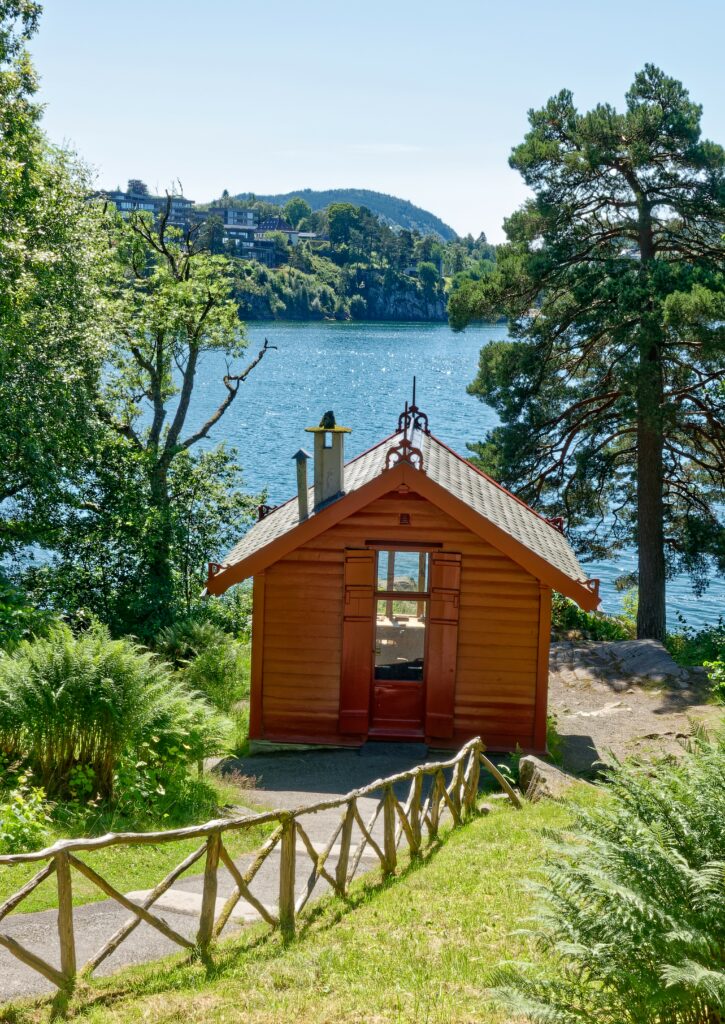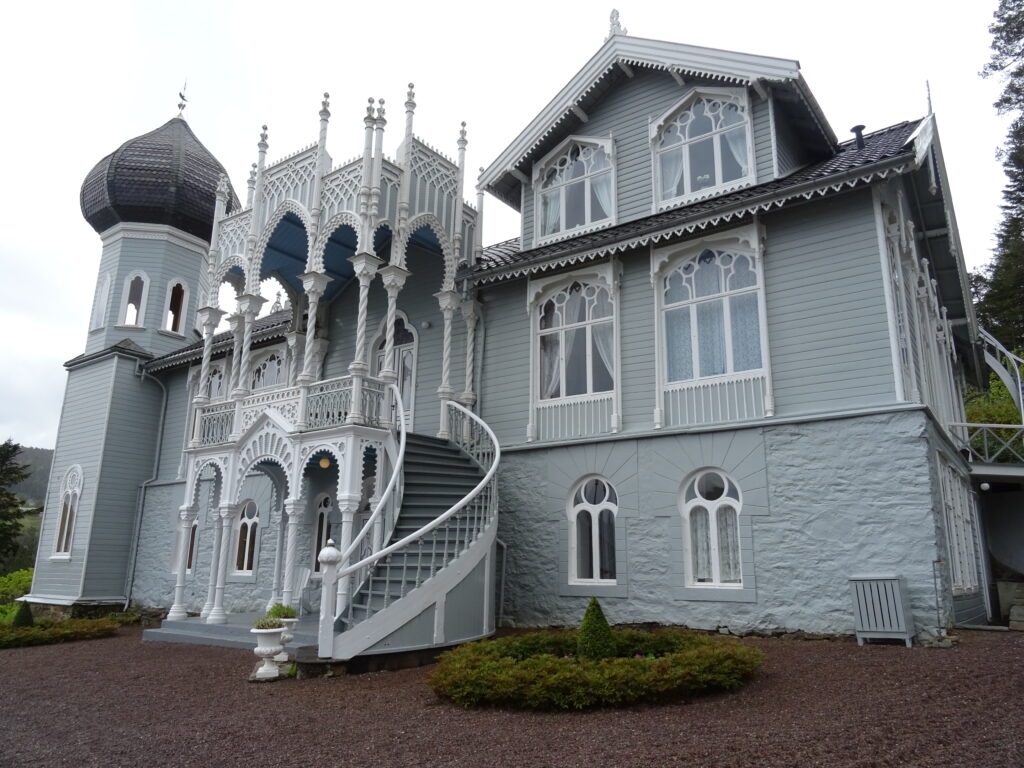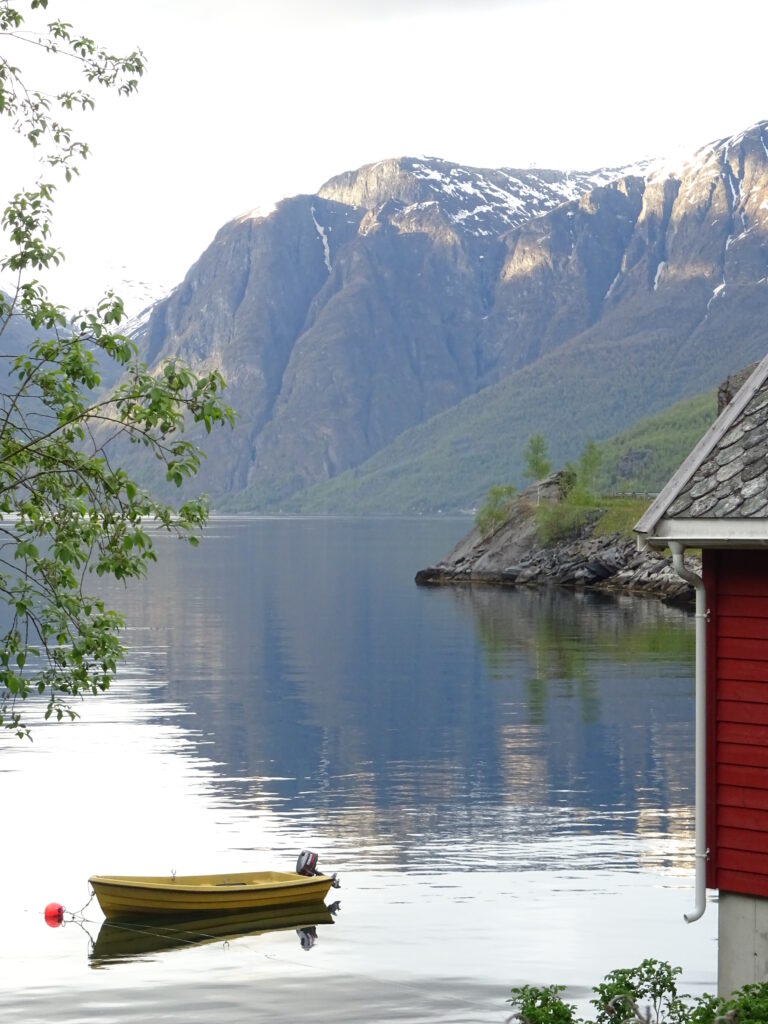Posted on 14th January, 2024
Norwegian Journey
Authenticity is important to me in my novels. If I write about a particular location, I want it be accurate and true to the place. That generally means book or internet research isn’t sufficient: to get it just right, I need to visit the location.
This was especially necessary for the third book in my Cremona Mysteries series, The Hardanger Riddle, which is set partly in Norway and features the search for a mysterious missing Hardanger fiddle – the Norwegian folk instrument which is different from a standard violin. It is usually much more highly decorated, with, for example, mother-of-pearl or silver inlay on the edges and fingerboard and a scroll which has been carved into some unique shape, frequently a dragon or animal’s head. Most importantly, it has drone strings underneath the normal strings which vibrate when the instrument is played, giving it a distinctive, very different sound.
I’d never been to Norway, so a research trip was essential to get the feel of the locations I wanted to use.

First stop: Bergen, on the west coast, which has the reputation of being one of the wettest cities in Europe – a reputation which, alas, it lived up to as it poured virtually the whole time we were there. It didn’t spoil the experience, however, as it’s such a beautiful city, even in the rain. Of particular note is the Bryggen, the ancient wharf on one side of the harbour which has some colourful, very attractive wooden buildings, and Mount Fløyen, which overlooks the city, and can be climbed either on foot or using the funicular railway. We cheated – well, half-cheated, as it was bucketing it down – by taking the funicular up and walking back down – exactly what the characters in my book do.
Bergen was the birthplace of two of Norway’s most distinguished musicians: Edvard Grieg – world-famous, of course. And less famous but, nevertheless, a massive figure in Norwegian history, the violinist Ole Bull, the Norwegian Paganini. Both these men were important to me as both feature in The Hardanger Riddle and a visit to their homes was a key part of my research.
Grieg’s is just a short bus ride and a twenty-minute walk outside Bergen at Troldhaugen – Troll’s Hill – a low promontory overlooking Lake Nordås. The house is a relatively modest, two-storey wood-clad building. When Grieg had it built, in 1885, the site would have been peaceful and remote, ideal for composition. Since that time, however, the surrounding area has been developed and built on so the house has a more suburban setting. The garden has also changed considerably, owing to Grieg’s fame. There is now a visitor centre, café and concert hall adjacent to the house – wonderful additions for tourists but they detract from the atmosphere of the place and make it harder to get a feeling for what it was like when Grieg lived there.
Unchanged, fortunately, is the wooden hut down by the water in which he composed. It’s little bigger than a garden shed, just large enough to accommodate a desk and chair, a chaise-longue and an upright piano. On the stool of the piano you can still see the thick book of Beethoven’s thirty-two piano sonatas on which the diminutive composer sat in order to comfortably reach the keyboard. That’s the most memorable image I took away from Troldhaugen – the actual spot in which he wrote his music. That and the small stuffed toy frog he kept in his pocket and rubbed for good luck before he went on stage to perform – that gave me a feel for the man far more vividly than all the other exhibits in the visitor centre.

Ole Bull’s home was a longer bus ride south from Bergen, then a short sea crossing in a tiny launch to Lysøen, the “Island of Light” on which he built a luxurious home with the proceeds of his long, lucrative career as a travelling virtuoso. The house is extraordinary, constructed in a semi-Moorish style but with a striking Russian Orthodox onion dome on top of a turret. The interior is just as impressive, lined with intricately-carved pine. Bull is relatively unknown outside his home country and his compositions are rarely played, but in Norway he’s a national hero, not just for his musical achievements but because he was instrumental in other important areas of Norwegian culture. It was Bull who advised the fifteen-year-old Grieg to go and study at the Leipzig Conservatory – a training that was vital in his development as a composer – and it was Bull who founded the National Theatre in Bergen and hired a young Henrik Ibsen to work there, launching his career as a playwright.

The day we visited Lysøen, the rain actually stopped and the sun came out, bathing the island in a brilliant light. There were very few visitors and when we walked away from the house into the forest to a small lake, we had the place entirely to ourselves. We sat on a log by the water, watching the sunlight dancing on the water and imagining Ole Bull out here playing his violin. I don’t think I’ve ever been anywhere so peaceful.

From Bergen – following the dictates of the plot of my novel – we headed north to Flåm, a small town at the head of the picturesque Aurlandsfjorden. This is Norway at its most spectacular, the mountains rising steeply from the shores of the fjord, the water deep and dark and icy – even in summer. My Italian characters, Gianni Castiglione and Antonio Guastafeste, go there in the book and there’s no way I could have got a feel for the beauty, and bleakness, of the landscape without going there myself. This area is the heart of the novel, the place where memories are long and disturbing secrets are buried. Do Gianni and Antonio find the missing fiddle they’re searching for? The Hardanger Riddle will reveal all.
